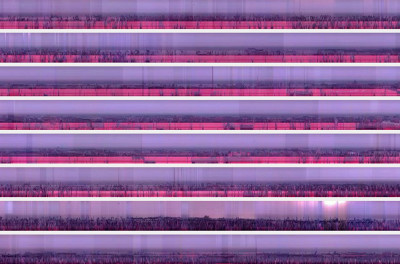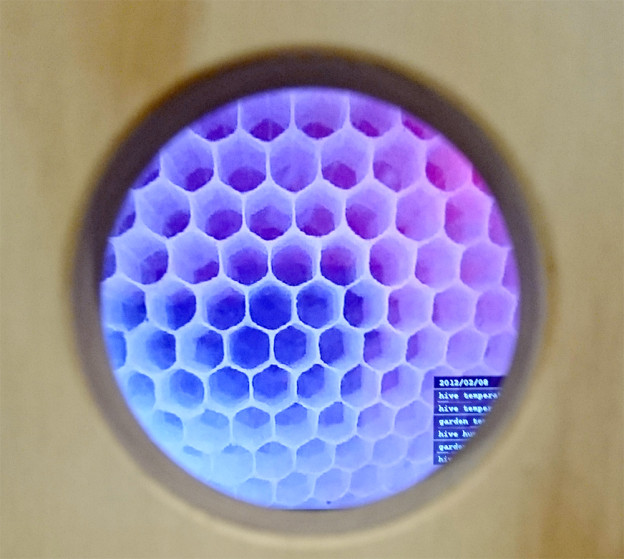Bee Monitoring. The raw material is an 8 TerraBytes stream of images. During 10 months I studied a colony’s development from scratch: from a late-spring swarm till the new spring one year later. Two (2) webcams filmed continuously in the beehive, at 15/fps, day and night. The videofiles were accelerated and compressed into 1 file of 11hours 35 minutes.
For the FIELDS exhibition in Riga, this long videofile was presented in a box with a peephole, in respect to the private life of the honeybees and their actions inside the beehive.

The Peephole, video installation, side – front and detail.

Slitscan representation of the 11:35 minutes Bee Monitoring video. The full length video is available in the opensource video database pandora
The Peephole (dancing bees) was presented
– as part of the Foraging Fields installation in the exhibition FIELDS, Riga – Latvia, from 15 may 2014 to august 4 2014.
